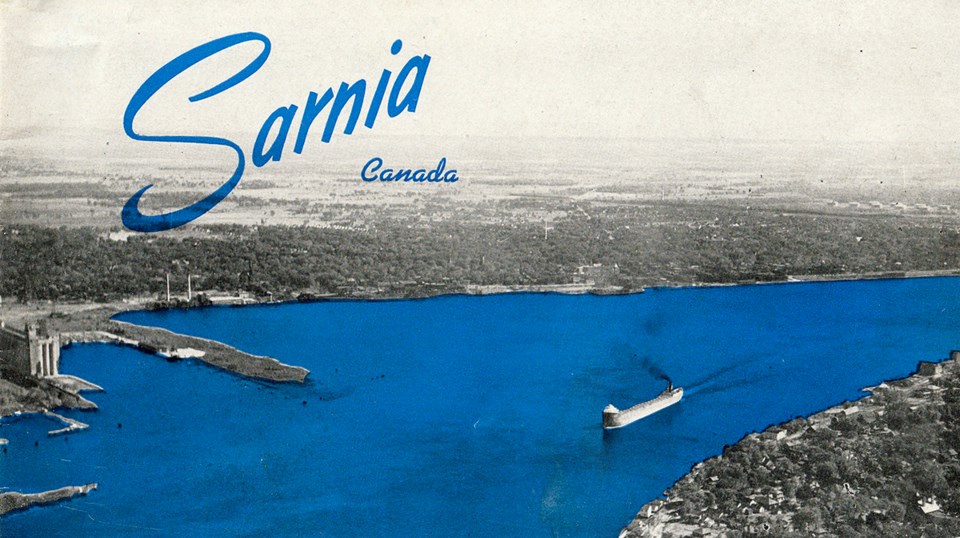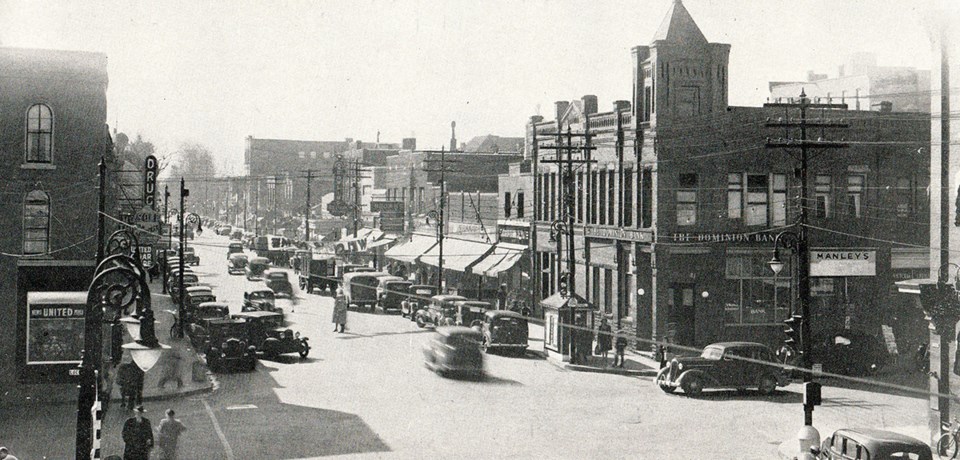Phil Egan
As an old travel and tourism guy who spent 39 years in the industry I was attracted to an item contained in the recently opened time capsules from Sarnia General Hospital.
It was a 36-page Sarnia tourism brochure about 8.5 by 5.5 inches in size. Though undated, the contents suggest it was printed in the late 1940s and it offers a revealing look at how the city saw itself and its attractions when the boomtown years began following the Second World War.
The front cover is an aerial view of the city’s skyline, which is deeply shrouded in a canopy of trees. Sarnia Bay is undeveloped.
The two “leading industries” are Imperial Oil Limited and Polymer Corporation. Dow Chemical Canada, “which has already made its place in world markets,” was still expanding, and Fibreglas was under construction. The Port Huron-Sarnia tunnel under the St. Clair River was more than 55 years old.
The population of Sarnia was 25,000, suggesting a publication date of 1948. “The village of Point Edward,” the brochure states, including “the communities of Oakwood Corners and Bluewater give Greater Sarnia about 35,000 people.”
Scott’s, at Christina Street and Derby Lane, is described as Sarnia’s newest retailer (November, 1947). The old City Hall with its “Welcome” sign over the door, is surrounded by the Windsor Hotel to the north, and the Masonic Hall and Odeon theatre to the east.
Vintage cars crowd Christina Street in an aerial photo taken at Lochiel Street. The Dominion Bank and Manley’s are visible on the southwest corner, the United Cigar store on the southeast.
Sarnia Collegiate had 51 teachers and 1,192 students. Johnston Memorial School had just been built, and Our Lady of Mercy School at Christina and Durand was “the newest in the city.”
A photo of Sarnia General Hospital is of the old structure, built in 1895, and St. Joseph’s Hospital with its 150 beds was only three-years old. The Carnegie Library in Victoria Park had about 35,000 books.
Kenwick-On-The-Lake is described as “the finest summer dancehall in Canada,” and a “mecca for music lovers and dancers.” Canatara, Tecumseh and Athletic Parks represent “the most ambitious of any park system of any city of its size in Canada.”
“During and since the war,” interested businesses are told, “Sarnia industries have been largely unionized. Both C.I.O. and A.F. of L. organizations operate and there has been no friction between them.”
The brochure ends with a promise that Sarnia will soon change over from “the present 25-cycle current to 60-cycle” by the Hydro Electric Commission.
Sarnia’s massive frequency conversion to 60-cycle began in 1950.
In short, the brochure illustrates a time of great optimism for Sarnia’s future.

